Flip Flop Resort Inn
Total Pageviews
Sunday, March 31, 2019
Thursday, November 1, 2018
Thank you for flying with us
Pilot - "Folks, we have reached our cruising altitude now, so I am going to switch the seat belt sign off. Feel free to move about as you wish, but please stay inside the plane till we land ... it's a bit cold outside, and if you walk on the wings it affects the flight pattern."
And, after landing: "Thank you for flying Delta Business Express. We hope you enjoyed giving us the business as much as we enjoyed taking you for a ride."
As the plane landed and was coming to a stop at Washington National, a lone voice comes over the loudspeaker: "Whoa, big fella. WHOA!"
After a particularly rough landing during thunderstorms in Memphis, a flight attendant on a Northwest flight announced: "Please take care when opening the overhead compartments because, after a landing like that, sure as Hell everything is going to fall out."
From a Southwest Airlines employee.... "Welcome aboard Southwest Flight XXX to YYY. To operate your seatbelt, insert the metal tab into the buckle, and pull tight. It works just like every other seatbelt, and if you don't know how to operate one, you probably shouldn't be out in public unsupervised. In the event of a sudden loss of cabin pressure, oxygen masks will descend from the ceiling. Stop screaming, grab the mask, and pull it over your face. If you have a small child traveling with you, secure your mask before assisting with theirs. If you are traveling with two small children, decide now which one you love more.
Weather at our destination is 50 degrees with some broken clouds, but they'll try to have them fixed before we arrive.
Thank you, and remember, nobody loves you, or your money, more than Southwest Airlines."
"As you exit the plane, please make sure to gather all of your belongings. Anything left behind will be distributed evenly among the flight attendants. Please do not leave children or spouses." "Last one off the plane must clean it."
And from the pilot during his welcome message: "We are pleased to have some of the best flight attendants in the industry. Unfortunately none of them are on this flight!!
Heard on Southwest Airlines just after a very hard landing in Salt Lake City: The flight attendant came on the intercom and said, "That was quite a bump and I know what ya'll are thinking. I'm here to tell you it wasn't the airline's fault, it wasn't the pilot's fault, it wasn't the flight attendants' fault.....it was the asphalt!"
Another flight Attendant's comment on a less than perfect landing: "We ask you to please remain seated as Captain Kangaroo bounces us to the terminal."
After a real crusher of a landing in Phoenix, the Flight Attendant came on with, "Ladies and Gentlemen, please remain in your seats until Captain Crash and the Crew have brought the aircraft to a screeching halt up against the gate. And, once the tire smoke has cleared and the warning bells are silenced, we'll open the door and you can pick your way through the wreckage to the terminal.
Part of a Flight Attendant's arrival announcement: "We'd like to thank you folks for flying with us today. And, the next time you get the insane urge to go blasting through the skies in a pressurized metal tube, we hope you'll think of us here at US Airways."
--------------------------------
“If crop circles are real, does this mean that aliens have designs for our planet?”
Monday, September 3, 2018
True
Friday, August 24, 2018
Sunday, August 19, 2018
I never knew I was a guinea pig cool
We’re guinea pigs in global microplastic experiment
Microplastics are everywhere – in our water, soil, and even the air we breathe. The consequences of this exposure on human health is unknown.
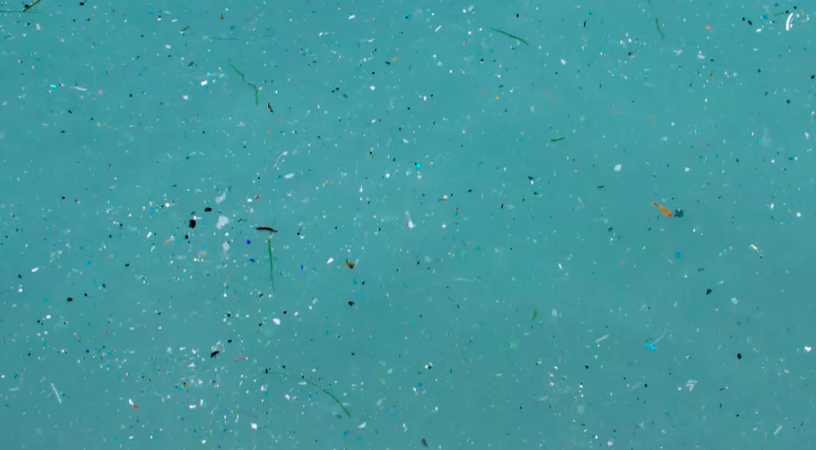
Microplastics in the Mediterranean Sea. Image via Dirk Wahn/shutterstock.com.
By John Meeker, University of Michigan
One of the main problems with plastics is that although we may only need them fleetingly – seconds in the case of microbeads in personal care products, or minutes as in plastic grocery bags – they stick around for hundreds of years. Unfortunately, much of this plastic ends up as environmental pollution. We’ve all seen the gruesome images of a sea turtle killed by a plastic bag, or the array of bottle caps, toothbrush fragments, and other plastic items found in the stomach of an albatross carcass. But what about the tiny microplastics that aren’t as readily visible?
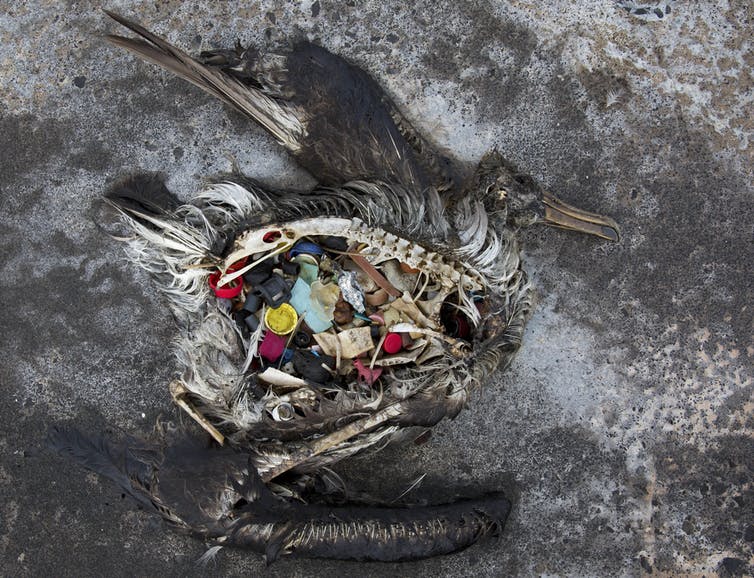
A black footed albatross chick with plastics in its stomach lies dead on Midway Atoll in the Northwestern Hawaiian Islands. Midway sits amid a collection of man-made debris called the Great Pacific Garbage Patch. Along the paths of Midway, there are piles of feathers with rings of plastic in the middle – remnants of birds that died with the plastic in their guts. Image via Dan Clark/USFWS/AP.
Much of the hundreds of millions of tons of plastic waste in our oceans is made up of microplastics. These are defined as plastic beads, fibers or fragments with a diameter of less than five thousand micrometers, equal to one-half centimeter (1/5 inch). Nanoplastics are thousands of times tinier, with a diameter of less than 0.1 micrometers, and are also likely to be widely present. By comparison, a human hair ranges from about 15 to 180 micrometers across. Some of these microplastics are deliberately engineered like microbeads in a facial scrub. Others result from the breakdown of larger plastic items.
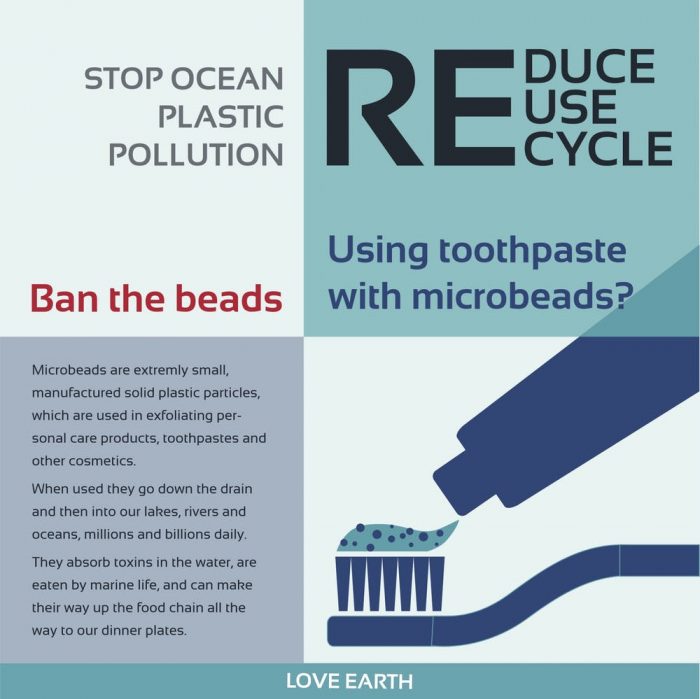
Stop ocean plastic pollution. Ban the microplastic beads in personal hygiene products like toothpaste and cosmetics. Image via Supriya07/shutterstock.com
I’m an environmental epidemiologist with a research group that studies exposure to chemicals commonly found in consumer products, including plastics, and how they affect human reproduction and development. Microplastics interest me because they are now turning up everywhere and we know virtually nothing about how they might impact human health. So are these tiny pieces of plastic damaging our bodies?
There are plastics and then the chemicals that are added to them
There are numerous types of commonly used plastics with differing structures, properties, and chemical additives to make them stronger, more flexible, more rigid, more resilient to UV, or to prevent microbial growth or the spread of fire. Over the past couple of decades concern has grown over the potential danger to human health posed by unavoidable exposures to plastic additives. Because these substances are not chemically bound to the plastic, they leach from the products in which they are used.
Certain chemicals – phthalates, bisphenol A, flame retardants – added to plastics to provide beneficial qualities may in turn disrupt hormones or other important functions following exposure. This could further lead to adverse reproductive and developmental effects or cancer. To date, most of the concerns for human health has focused on these additives in the plastics but not the plastics themselves.
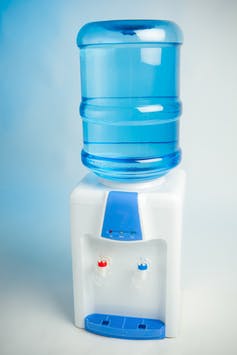
Bisphenol A (BPA) is commonly used in rigid polycarbonate plastics such as water cooler bottles. Image via nikkytok/shutterstock.com.
Recent studies have reported on the ecotoxicity of microplastics. They harm microscopic aquatic creatures called zooplankton by becoming embedded after ingestion, and they also adhere to seaweed, fish and eggs that marine animals eat, causing these plastics to move up the food web. Among certain small marine species, microplastics have been shown to reduce growth, hinder reproduction, and shorten the lifespan.
A drop in the size or health of these smaller organism populations could have significant ripple effects throughout the food chain. Laboratory toxicology experiments, particularly among mammals, are few but have shown that high doses of microplastics adversely impacted liver function, altered metabolism and other important biological reactions in mice, and tended to gather in certain tissues in a manner that was related to the size of the particles . Furthermore, once in the environment microplastics can preferentially bind to, and subsequently serve as a vehicle for, other harmful chemicals such as toxic persistent organic pollutants and pathogens such as Vibrio spp, which causes food poisoning.
Microplastics, microplastics everywhere
As for human exposure, no direct studies have been conducted but microplastics have been found in virtually all bodies of water on the planet, and on agricultural lands. They have been found in shellfish, sea salt, honey, beer, tap water, bottled water, and even air. Thus, ingestion and inhalation of microplastics are of concern as routes of exposure.
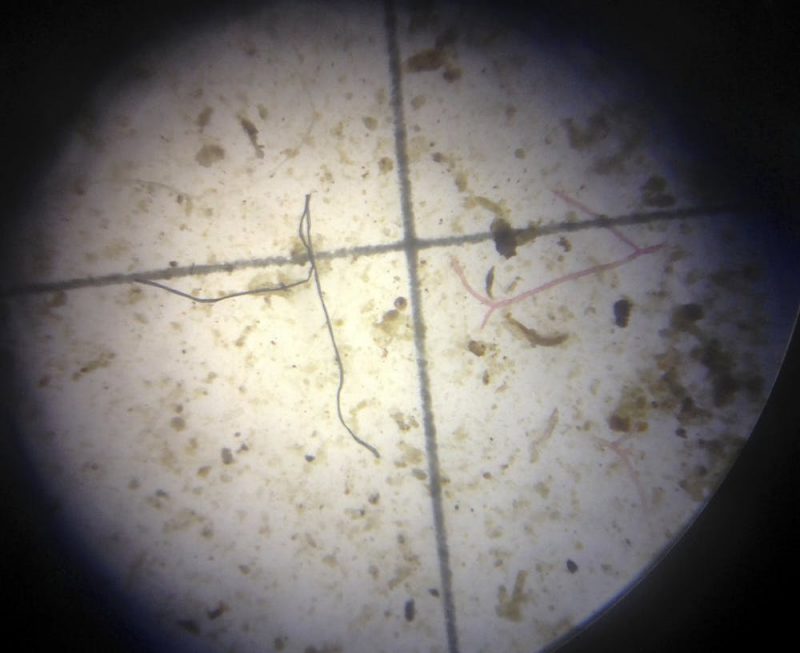
In this 2017 photo, a possible plastic microfiber is shown through a microscope during an examination of nearby ocean water in Key Largo, Florida. Gulf Coast researchers are preparing to launch a two-year study to see what kinds of microscopic plastics can be found in the waters from south Texas to the Florida Keys. Image via Wilfredo Lee/AP Photo.
The uptake, distribution, accumulation (and interaction with tissues and organs), metabolism, elimination, and ultimate toxicity of microplastics in the body will depend on many factors. These factors include size, shape, type of plastic, surface properties, biopersistence, and the presence of chemical additives or other toxic agents the microplastics may have picked up the environment.
Given that human exposure to microplastics is widespread, results from animal studies are certainly a cause for concern and an important factor for risk assessment. But, alas, lab animals and wildlife are often not accurate proxies for what might happen in humans due to differences among species or exposure scenarios.
In addition, unlike in clinical trials for a new drug, it is not ethical for us to randomly assign groups of people for treatment – microplastics, for example – or placebo and modulate dose levels to see how exposures might impact human health. So we are left with observational epidemiology studies, which can be messy to conduct and are by definition reactive and unable to fully prove causation. There are different types of observational studies but we generally measure exposures, health outcomes, and other relevant information as best we can within a group of people who are going about their lives, and then look for statistical relationships in the collected data.
The worldwide plastic experiment
In the worst case, workers who are exposed to high levels of toxicants as part of their job become sentinel species, and people in our communities are perceived as guinea pigs while scientists wait and watch for what might happen as exposures occur.
There are many historical and recent examples of environmental threats that we identified after it was too late. Likewise, because exposures to microplastics are already occurring we need to consider how we can measure the effects on human health and act quickly to better understand the issue so it can be addressed appropriately. As an epidemiologist I know this certainly won’t be easy.
Which individuals and populations are exposed to high levels of microplastics? How is the exposure happening? How can we measure or estimate exposure? What aspect of the plastic is most relevant – is it size, shape or chemical makeup of these plastics? Or is it the toxicants or pathogens that attach to them? Or all of the above? What health effects are of most concern? What life stages are most sensitive to exposure? Is the fetus most at risk? Or are adolescents? Or people with preexisting conditions? Is duration of exposure, peak exposure, or cumulative exposure most important? How do health risks from plastic microparticles compare to the health and safety benefits of plastic?
To help us answer these questions, scientists who study exposures to chemicals, environmental epidemiologists, and other researchers need to utilize and stretch their various techniques, tools, and study designs to explore each of these smaller questions to figure out whether microplastics are harmful to human health. It could take many years or even decades before we are able to get a firm grasp of whether microplastics are toxic to humans.

Shoppers holding non-plastic carry bags walk during rains at a market in Mumbai, India, Saturday, June 23, 2018. India’s western state of Maharashtra enforced its state-wide ban on a wide range of single-use plastic items. Image via Rajanish Kakade/AP Photo.
Shifting from plastics to green alternatives
Whether or not we ever find adverse human health effects in association with microplastics, it’s clear we must take action to reduce the amount and toll of plastics on our environment. In addition to remediation efforts for the massive amount of plastic pollution already out there, better materials design through greater application of green chemistry principles is one positive step we can take. We can also reduce single-use plastics, introduce effective recycling programs on a global scale, and implement policies at the national level, like phasing out microbeads or banning certain additives, or locally at the city, county, or state level.
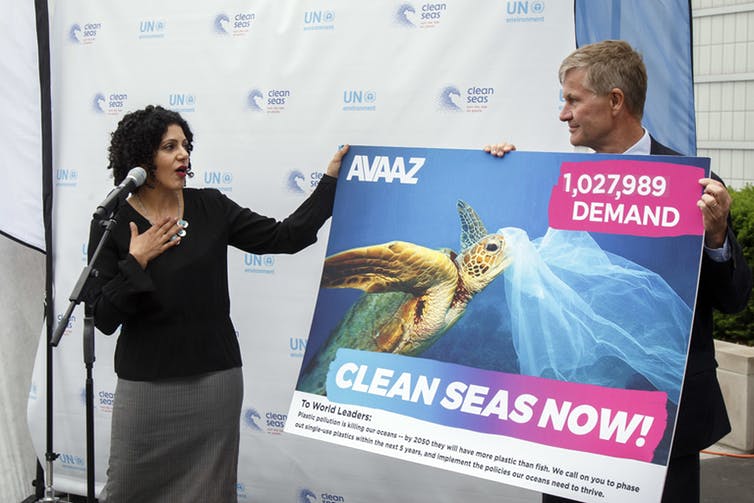
United Nations Environment head Erik Solheim receives an AVAAZ petition signed by over one million people urging action to reduce plastic pollution in the world’s oceans, Tuesday, June 6, 2017, at U.N. Headquarters. Image via AP.
There is no question that synthetic plastics have made our lives safer and more convenient over the past half-century or so – keeping foods fresh, providing crucial parts for cars and aircraft, preventing electronics from starting or spreading fires, contributing to medical treatment and care, and helping deliver clean water to parts of the world that would not otherwise have access. The applications are endless and we rely on these materials. Data on rates and trends for plastic production and waste generation are nothing short of staggering.
In the near term the most effective strategy may involve each one of us taking stock of our plastic usage and disposal habits, compare that with our actual needs and what we could be doing differently, and adjust accordingly.
John Meeker, Professor of Environmental Health Sciences, University of Michigan
This article was originally published on The Conversation. Read the original article.
Bottom line: How microplastic pollution might affect human health.
Sunday, August 12, 2018
Wednesday, June 27, 2018
Thanks Al
A tough looking group of hairy bikers are riding when they see a girl about to jump off a bridge, so they stop. The leader, a big burly man, gets off his bike and says, "What are you doing?" "I'm going to commit suicide," she says. While he doesn’t want to appear insensitive, he also doesn’t want to miss an opportunity, so he asks, "Well, before you jump, why don't you give me a kiss?" She does, and it is a long, deep, lingering kiss. After she's finished, the tough, hairy biker says, "Wow! That was the best kiss I’ve ever had! That's a real talent you’re wasting. You could be famous. Why are you committing suicide?" "My parents don't like me dressing up like a girl…"

















